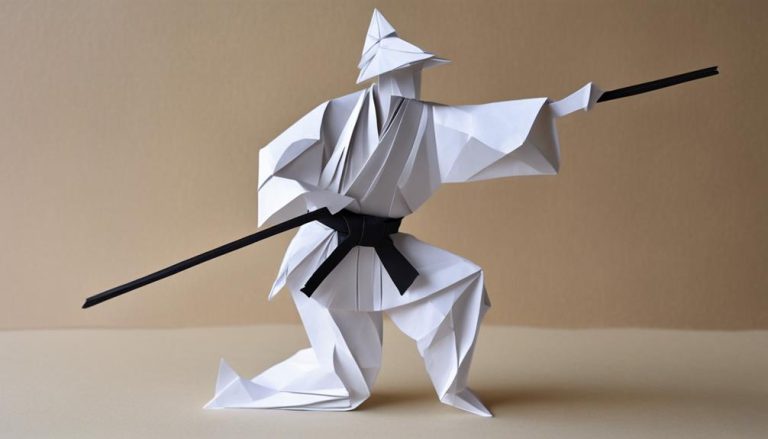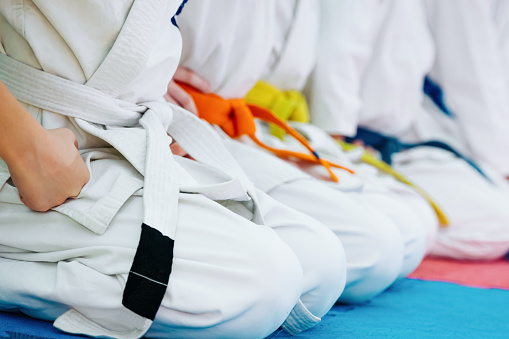General Rules of Taekwondo
Have you ever wondered about the intricate web of regulations governing the practice of Taekwondo? From the systematic progression through belt colors to the precise criteria for scoring in sparring matches, the world of Taekwondo is governed by a set of rules that ensure fairness and safety for all participants. But did you know that beyond the surface-level rules lies a code of conduct for referees that upholds the integrity of the sport? Discover the hidden nuances and essential guidelines that shape the discipline of Taekwondo.
Belt System and Rank Progression
In Taekwondo, the belt system and rank progression serve as vital markers of a practitioner's skill and dedication to the art. Rank advancement in Taekwondo is a process that requires commitment, discipline, and perseverance. As you progress through the different belt levels, you not only demonstrate your physical abilities but also your mental fortitude and understanding of Taekwondo's principles.
Testing procedures for rank advancement vary depending on the school or organization, but they typically include a combination of forms, sparring, self-defense techniques, and board breaking. These tests are designed to evaluate your proficiency in different aspects of Taekwondo and ensure that you are ready to advance to the next level. It is essential to approach these tests with focus and determination, as they are a reflection of your progress and dedication to the art.
When preparing for a belt test, make sure to practice diligently and seek guidance from your instructors. They will provide you with valuable feedback and help you refine your techniques. Additionally, participating in regular classes and seminars can enhance your skills and deepen your understanding of Taekwondo.
Scoring Criteria in Sparring
As you engage in sparring matches, understanding the scoring criteria is crucial for demonstrating your proficiency and strategic prowess in Taekwondo. In Taekwondo sparring, points are awarded based on effective and precise techniques executed during the match. The key scoring techniques include punches, kicks, and strikes delivered accurately to the legal target areas of your opponent. Each successful technique showcases your skill and control, earning you points in the match.
Scoring techniques in Taekwondo sparring are not the only aspect to consider. Point deduction is another crucial element that can influence the outcome of a match. Points can be deducted for various infractions such as excessive contact, attacking below the waist, or displaying unsportsmanlike conduct. It is essential to adhere to the rules and regulations of Taekwondo to avoid point deductions and maintain your competitive edge.
To excel in sparring and maximize your scoring potential, focus on honing your techniques and maintaining respect for your opponent and the sport. By mastering the scoring criteria and avoiding point deductions, you can showcase your Taekwondo skills effectively in sparring matches. Remember, precision, control, and sportsmanship are the pillars of successful sparring in Taekwondo.
Proper Etiquette in the Dojang
Maintain proper decorum and respect for the traditions of Taekwondo by following the established etiquette in the Dojang. Proper behavior is essential in creating a harmonious and respectful environment within the Dojang. When entering and leaving the Dojang, bowing is a sign of respect towards the place of practice, your instructors, and fellow practitioners. It signifies humility and readiness to learn. During training, it is important to listen attentively to your instructor, follow their guidance promptly, and treat your training partners with respect.
Respectful communication is key in the Dojang. Address your seniors and instructors with the appropriate titles, showing reverence and acknowledging their experience. Keep your tone polite and refrain from engaging in disrespectful or aggressive language. If you have any questions or concerns, raise them respectfully at the appropriate time, without interrupting the flow of the class.
Remember that the Dojang is a place of discipline and learning. Maintain a focused and attentive attitude during training sessions, avoiding distractions that may disrupt your progress or that of others. By adhering to the established etiquette in the Dojang, you not only show respect for the art of Taekwondo but also contribute to a positive and enriching training environment for yourself and your peers.
Equipment Regulations and Usage
When it comes to Taekwondo, understanding the proper gear requirements and safety precautions during sparring is crucial. Ensuring that you have the right equipment and follow safety guidelines will not only protect you but also your training partners. Remember, the right gear and adherence to safety regulations are essential for a successful and injury-free training session.
Proper Gear Requirements
Proper gear requirements in Taekwondo demand a strict adherence to equipment regulations and precise usage guidelines. To ensure safety during training and sparring sessions, it is vital to prioritize gear maintenance. Regularly inspect and clean your gear to prevent any malfunctions that could lead to injuries. Additionally, proper fitting of your gear is crucial for comfort and mobility. Ill-fitting equipment can hinder your movements and affect your performance. Always make sure that your gear fits securely but allows for flexibility. Comfort is key when selecting your gear, as it will enable you to focus on your training without distractions. By maintaining your gear and ensuring it fits correctly, you are taking essential steps towards a safe and productive Taekwondo practice.
Safety Precautions During Sparring
To ensure optimal safety during sparring in Taekwondo, strict adherence to equipment regulations and precise usage guidelines is imperative. When engaging in sparring sessions, always prioritize safety by following these key precautions:
- Wear the Proper Gear: Make sure to equip yourself with approved headgear, mouthguards, groin guards, hand and foot protectors.
- Secure Your Gear: Ensure that all protective gear fits snugly and is properly fastened to avoid any distractions during sparring.
- Inspect Equipment Regularly: Check your gear before each session to identify any signs of wear and tear that may compromise your safety.
- Follow Training Techniques: Implement proper training techniques to enhance your skills and reduce the risk of injury during sparring.
- Communicate with Your Partner: Maintain open communication with your sparring partner to ensure a safe and enjoyable practice session.
Weight Divisions in Competitions
In Taekwondo competitions, weight divisions play a crucial role in ensuring fair and balanced matches. Competitors are grouped into specific weight classes to create a level playing field where individuals with similar body sizes and strengths face off. Understanding the importance of weight divisions can greatly impact your competition tactics and conditioning strategy.
In Taekwondo, each weight class has its own set of challenges and advantages. Competing against opponents of similar weight requires a different approach compared to facing someone from a different weight division. For instance, athletes in higher weight categories may possess more power in their strikes but could potentially be slower in their movements. On the other hand, those in lower weight classes might be quicker and more agile but may need to focus on generating sufficient force in their techniques.
To excel in your chosen weight division, strategic planning is key. This involves analyzing your opponent's strengths and weaknesses, adapting your techniques accordingly, and maintaining peak physical conditioning. Conditioning plays a vital role in ensuring that you can endure the demands of competing at a specific weight. By tailoring your training regimen to suit the requirements of your weight class, you can enhance your performance and increase your chances of success in Taekwondo competitions.
Rules for Breaking Techniques
Understanding the precise regulations governing the execution of breaking techniques is paramount for any serious Taekwondo practitioner. Breaking techniques are not just about raw power; they require finesse and technique execution to be successful. Here are some key points to consider when it comes to breaking techniques:
- Focus on Technique Execution: Proper form and technique are essential when performing breaking techniques. Each movement must be precise to ensure a successful break.
- Generate Power Efficiently: Power generation is crucial in breaking techniques. Utilize your body mechanics effectively to maximize the power behind your strikes.
- Mind Over Matter: Mental focus plays a significant role in breaking techniques. Visualize your target and maintain a clear mind to execute the break flawlessly.
- Practice Makes Perfect: Consistent practice is key to mastering breaking techniques. Repetition helps improve technique and power over time.
- Safety First: Always prioritize safety when practicing breaking techniques. Use the appropriate equipment and ensure proper supervision to prevent injuries.
Code of Conduct for Referees
As a referee in Taekwondo, it is crucial to maintain clarity in your role, uphold fair judgment expectations, and consistently apply the rules. Your decisions have a significant impact on the outcome of matches, requiring a deep understanding of the sport's regulations and a commitment to unbiased officiating. By embodying professionalism and integrity, you contribute to the overall success of the competition and the respect for the martial art of Taekwondo.
Referee's Role Clarity
With a keen eye and unwavering commitment, the referee in Taekwondo serves as the impartial guardian of the rules and standards, ensuring fairness and upholding the integrity of the competition. Effective communication and fair play enforcement are crucial for maintaining a balanced and just environment during matches. Here are some key aspects of the referee's role clarity:
- Clear Signals: Ensuring all signals are easily understandable by competitors and spectators.
- Consistent Enforcement: Applying the rules consistently throughout the competition.
- Quick Decision Making: Making timely and accurate decisions to keep the match flowing smoothly.
- Impartiality: Remaining unbiased and neutral in all judgments.
- Respectful Conduct: Interacting with participants respectfully and professionally.
Fair Judgment Expectation
In demanding adherence to the Code of Conduct for Referees, a steadfast commitment to fair judgment expectation is paramount in maintaining the integrity of Taekwondo competitions. Impartial judging and ethical conduct are fundamental principles that must guide the actions of referees. It is imperative that referees remain unbiased, ensuring that each competitor is given a fair opportunity to showcase their skills. By upholding these standards, referees play a crucial role in upholding the values of Taekwondo and promoting sportsmanship. Consistency in decision-making and a dedication to upholding the rules of the sport are essential for creating a level playing field. Remember, fair judgment not only benefits the competitors but also elevates the overall spirit of the competition.
| Fair Judgment Expectation |
|---|
| Impartial Judging |
| Ethical Conduct |
| Unbiased Decisions |
| Consistency |
| Sportsmanship |
Consistent Rule Application
For referees in Taekwondo competitions, maintaining consistent rule application is a foundational aspect of adhering to the Code of Conduct. Consistent enforcement ensures fair competition and upholds the integrity of the sport. To achieve this, referees must:
- Stay Knowledgeable: Continuously update themselves on rule changes.
- Remain Impartial: Treat all competitors equally, regardless of affiliation.
- Communicate Clearly: Ensure athletes understand any decisions made.
- Apply Penalties Fairly: Consistently enforce rules without bias.
- Stay Focused: Remain alert throughout matches to catch any rule violations.
Safety Protocols During Training
Ensure you adhere to the safety protocols rigorously during your Taekwondo training sessions to prevent injuries and promote a secure environment for all practitioners. Injury prevention and safety measures are paramount in any martial arts practice, and Taekwondo is no exception. Before starting any training, it is crucial to warm up properly to loosen your muscles and reduce the risk of strains or sprains. Additionally, always wear the appropriate protective gear, such as headgear, mouthguards, and shin guards, to shield yourself from potential impacts during sparring or drills.
When in the training environment, be mindful of your surroundings and fellow practitioners. Respect your training partners and instructors, following their guidance and techniques carefully to minimize the chances of accidents. Communication is key; if you have any pre-existing injuries or conditions, make sure to inform your instructor to adapt the training accordingly. Moreover, familiarize yourself with the emergency response procedures in place at your Taekwondo school. Knowing how to react swiftly and appropriately in case of an injury can make a significant difference in the outcome.
Frequently Asked Questions
Can Taekwondo Practitioners Compete in Other Martial Arts Competitions While Still Maintaining Their Rank in Taekwondo?
When engaging in other martial arts competitions, you can benefit from cross-training, gaining new skills and perspectives. However, ensure that your Taekwondo rank is maintained by understanding the rules and requirements of each discipline.
Are There Any Restrictions on the Type of Equipment That Can Be Used During Taekwondo Training and Competitions?
In taekwondo, the type of equipment allowed for training and competitions is regulated to ensure safety and maintain standards. From training tools to protective gear, these restrictions are vital for your well-being and progress.
How Are Disputes or Disagreements Typically Handled Between Competitors During a Sparring Match?
During a sparring match, disputes are typically resolved through clear communication and adherence to sparring etiquette. Conflict resolution is crucial, emphasizing sportsmanship practices. Remember, maintaining respect for your opponent is fundamental in Taekwondo competitions.
Are There Any Specific Guidelines for How to Address Higher-Ranked Practitioners or Instructors in the Dojang?
When addressing higher-ranked practitioners or instructors in the dojang, follow etiquette guidelines. Show respect through proper greetings and acknowledge the seniority hierarchy. Maintain respectful communication at all times to foster a disciplined and knowledgeable environment.
What Are the Consequences for Violating Safety Protocols During Training Sessions or Competitions in Taekwondo?
If you violate safety protocols in Taekwondo, consequences are serious. Disqualification, warnings, or reduced rank can occur. Competing in other martial arts competitions could be affected. Respect the rules to maintain your standing.






